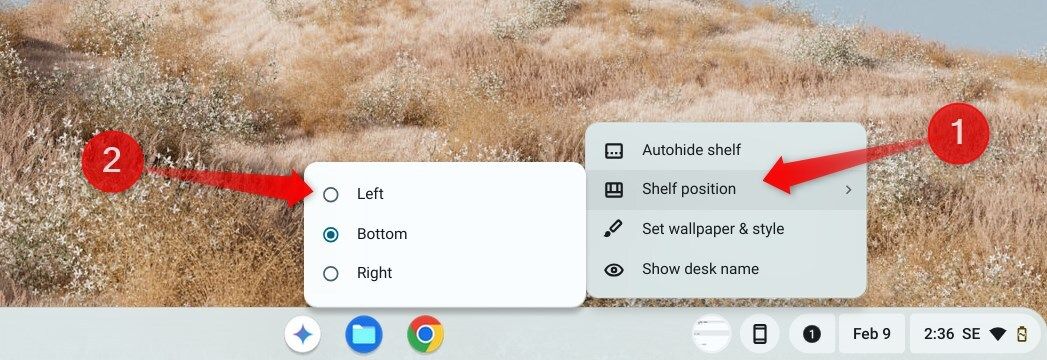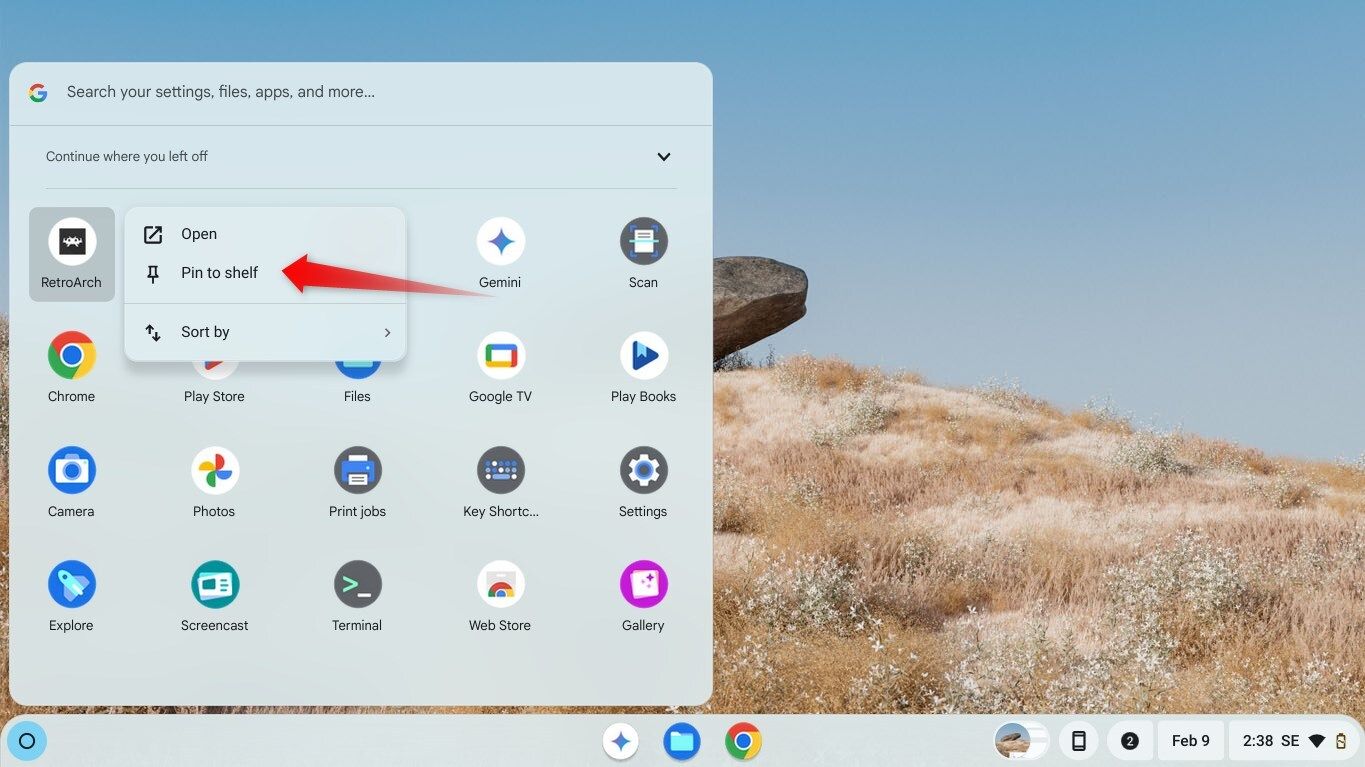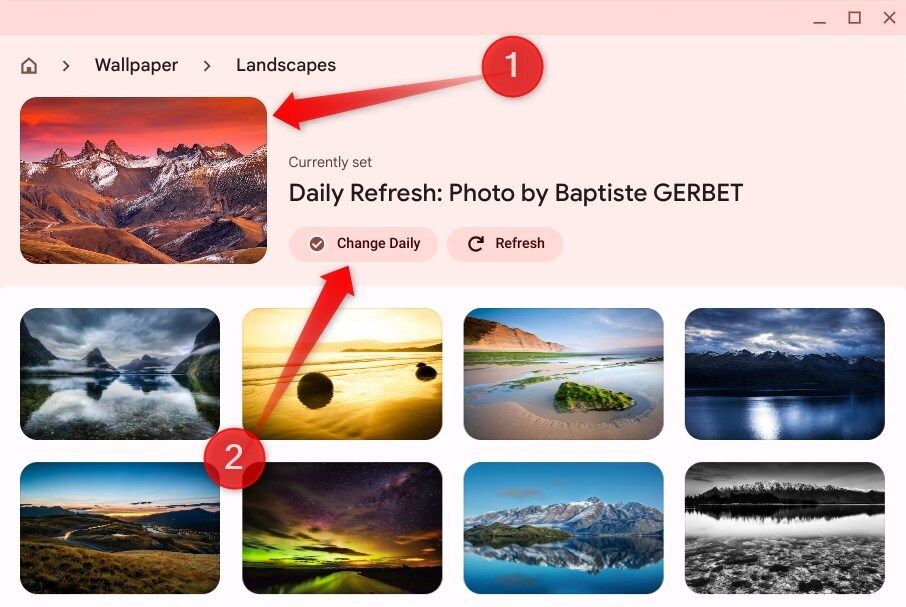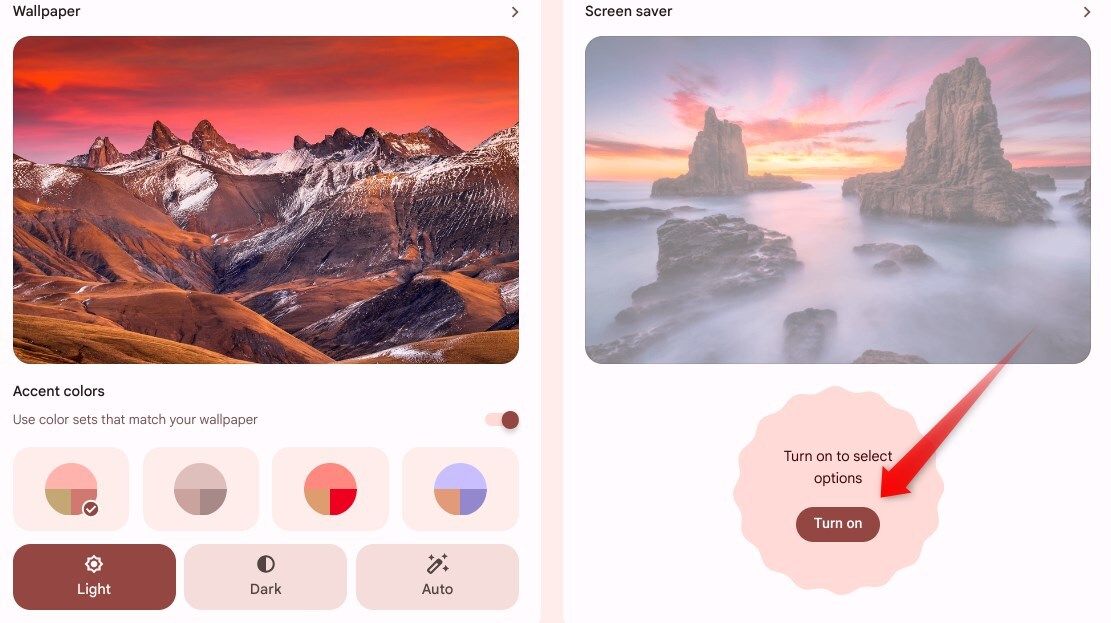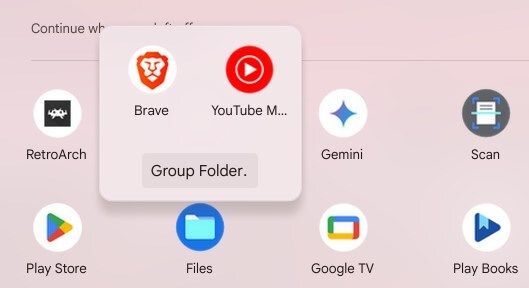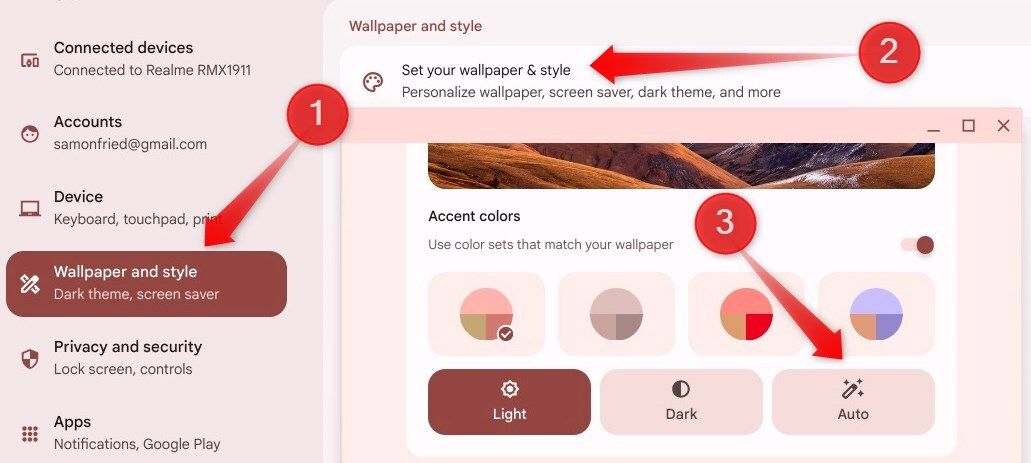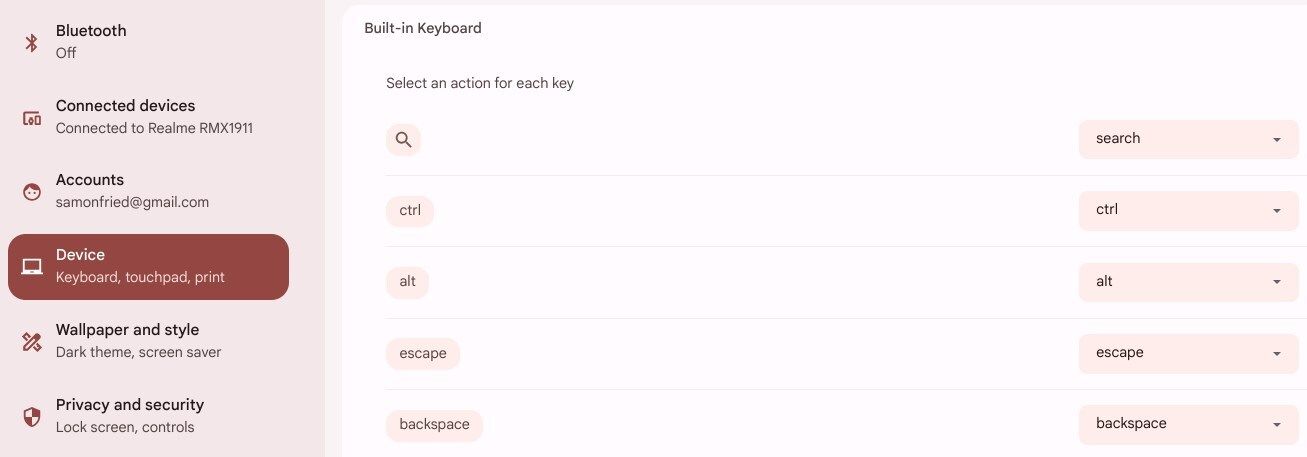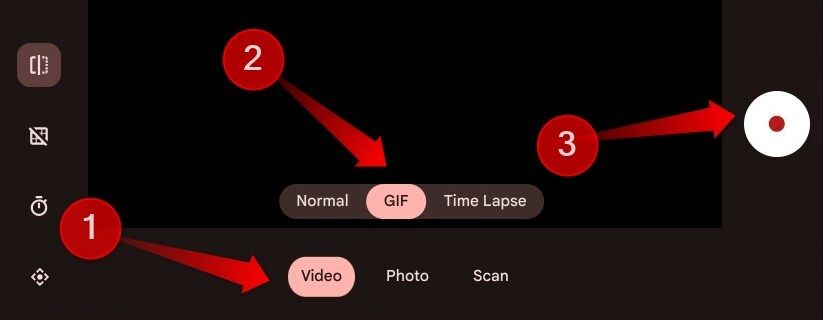Chromebooks offer a range of personalization options, from repositioning the Shelf and changing the wallpaper to customizing the cursor’s size or toggling between dark and light modes. If you have never customized your settings, here are a few tweaks to make your Chromebook feel more personal.
8
Personalize the Shelf
The Shelf—the bar at the bottom of your Chromebook—helps you manage open apps and launch new ones. It offers several customization options. For a cleaner layout, you can move it to the left or right, pin frequently used apps, and remove unnecessary ones. If you prefer a clutter-free view, you can even hide the Shelf and access it by hovering over the bottom.
To change its position, right-click on the desktop, go to “Shelf Position,” and choose a new location. To auto-hide it, right-click and select “Autohide Shelf.”
To pin frequently used apps, right-click on an app and select “Pin to Shelf.”
To remove it, right-click and select “Unpin.” You can also rearrange pinned apps for quicker access.
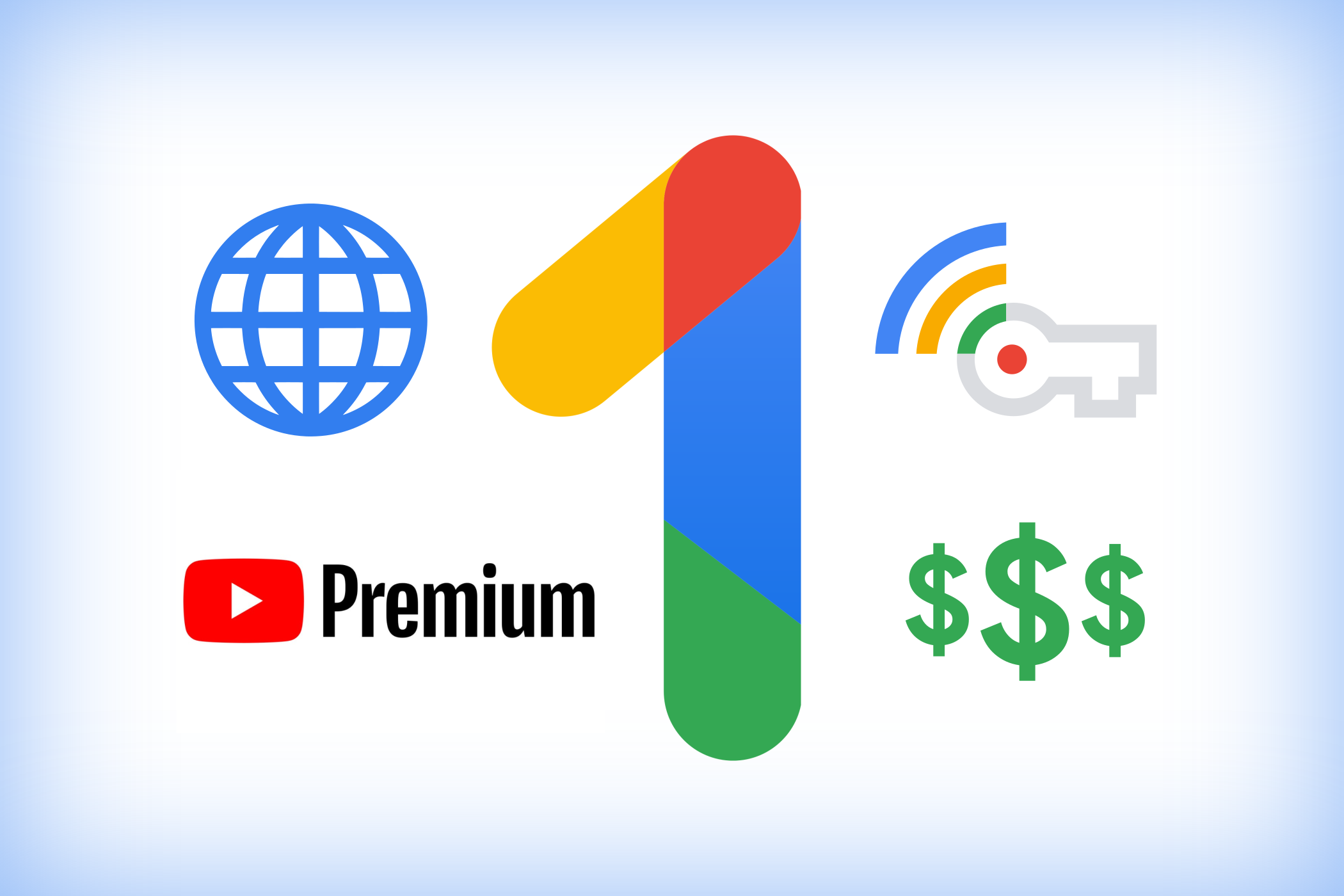
Related
7
Set a Unique Wallpaper and Screen Saver
You can customize the look of your Chromebook by changing the wallpaper, making it more personal and visually appealing. Right-click on the desktop, select “Set Wallpaper and Style,” then click “Wallpaper.” You can choose an image from your laptop, Google Photos, or Chrome OS’s preset wallpaper collections.
You can also enable “Change Daily” to let your Chromebook cycle through wallpapers in a selected set, giving it a fresh look every day.
You can also set up a screensaver. Right-click on the desktop, go to “Set Wallpaper and Style,” and click “Turn On.” Then, choose from available animations or an album from Google Photos.
6
Organize Apps by Color in the Launcher
The launcher gives you quick access to your installed apps, which you can open by clicking the circle icon in the bottom-left corner. By default, apps are arranged randomly in the launcher, making it harder to find what you need. To simplify navigation, you can organize them by name or color, each offering unique benefits.
Sorting by name arranges apps alphabetically, placing those starting with “A” first, followed by “B,” and so on. Sorting by color groups apps based on their icon color and helps keep apps from the same developer, like Google, together. To sort apps, right-click in the launcher, select “Sort By,” and choose “Name” or “Color.”
Sorting apps by name or color makes them easier to find, but it may not be enough if you have too many installed. To keep your launcher organized and improve navigation, you can group related apps into folders. For example, you can create separate folders for work apps, games, productivity tools, etc.
To create a folder containing a particular type of app, open the launcher, drag one app over another, and release it to form a group. Then, give the folder a unique name. To add more applications to this folder, drag them onto it. To remove an app, open the folder, drag it outside, and release it.
4
Adjust the Cursor’s Size and Color
The default mouse cursor is too small, which makes it dull and straining on the eyes. I customize its size and color to make it more noticeable and improve visibility. This is particularly useful for those using a high-resolution display or individuals with vision impairments.
You can customize the mouse cursor in the Accessibility settings. Open the launcher, go to “Settings,” navigate to the “Accessibility” tab on the left, and open “Cursor and Touchpad.” Here, enable “Show Large Mouse Cursor,” then use the slider to adjust its size. You can also open the “Cursor Color” dropdown to change its color from the default option.
3
Switch Between Dark or Light Theme
Like most operating systems, ChromeOS allows you to switch between dark and light themes. The light theme is ideal for bright environments, while the dark theme reduces eye strain in low-light settings. Adjusting the theme based on your surroundings can make your display more comfortable and visually appealing.
To change themes on your Chromebook, open the launcher by clicking on the circle icon in the bottom-left corner, go to “Settings,” and then navigate to Wallpaper and Style > Set Your Wallpaper and Style. Here, you can select “Dark” or “Light” mode or choose “Auto” to let ChromeOS switch themes automatically based on your location and the time of day.
2
Remap Keyboard Keys for Better Productivity
By default, ChromeOS assigns specific keys to functions you might not use frequently. For example, the Search key is typically used to search the web and apps, but you can remap it to act as a Caps Lock key, similar to Windows laptops. Likewise, you can remap other keys to make it easier to access functions you use often.
To remap keys, go to the launcher and open the Settings app. Then, select the “Device” tab and select “Keyboard.” Here, you can use the dropdown menus for Search, Ctrl, Alt, Escape, and Backspace to assign them new functions. You can also use the keys in the top row as function keys by toggling the corresponding option.
1
Use a GIF for Your Profile Picture
By default, your Chromebook uses the static image from your Google account as your profile picture. If you want to add some personality, you can replace it with an animated GIF. This feature makes your login screen feel more dynamic and unique. You can either upload a GIF you’ve downloaded or record a short clip to use as one.
To set a GIF as your profile picture, open the launcher, go to the “Settings” app, and navigate to the “Accounts” tab. Click on your profile picture and upload the GIF you want to use. To create a custom GIF, open the Camera app, select Video > GIF, record a short clip, and click “Save” when satisfied.
Customizing your Chromebook improves its visual appeal, keeps things organized, and improves navigation. Customizing the setup to suit your needs also makes you more efficient. If you haven’t tried the above features, do so and see how much they can improve your Chromebook experience.


